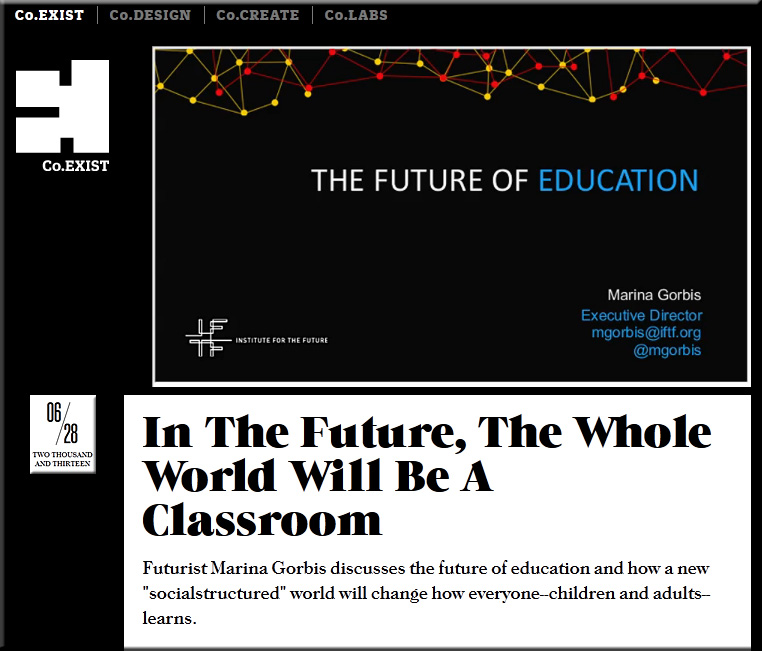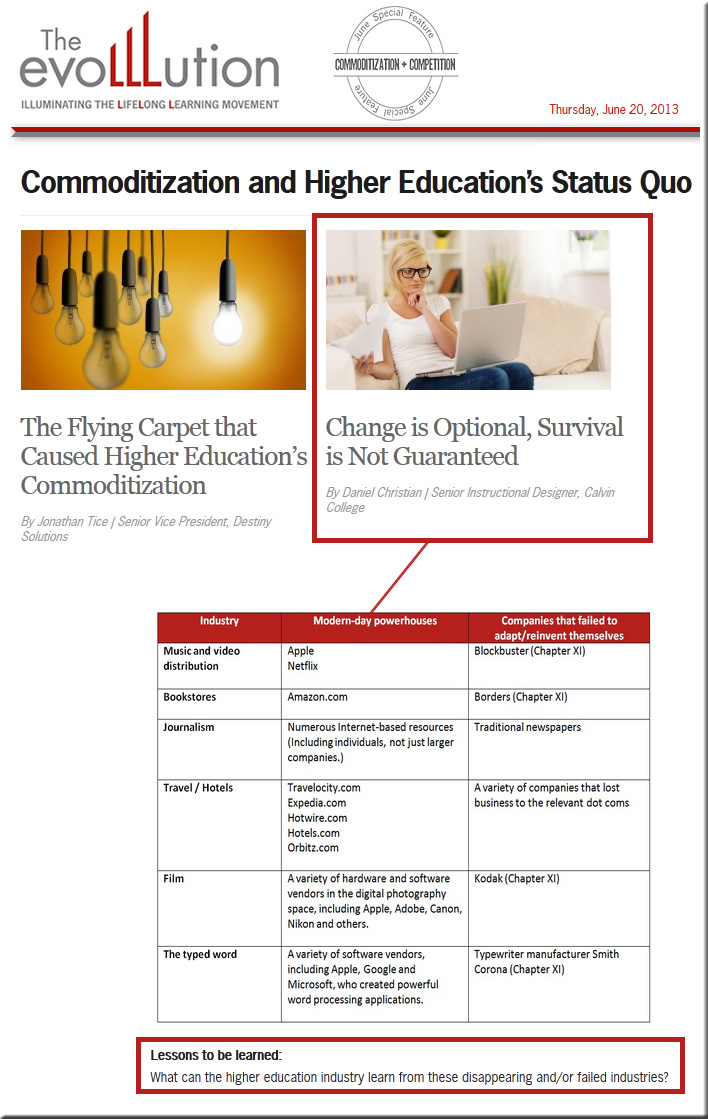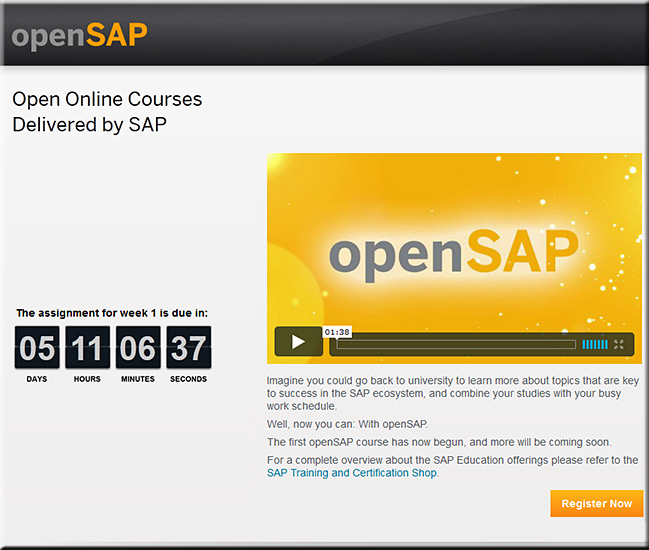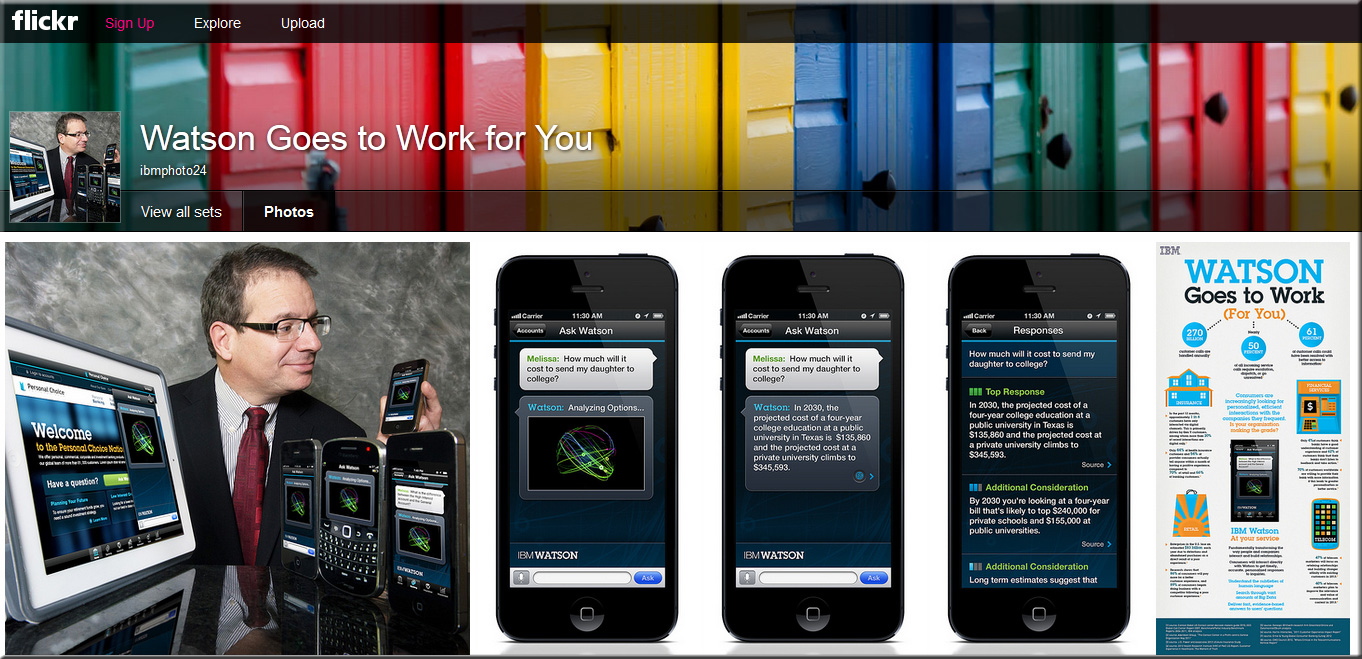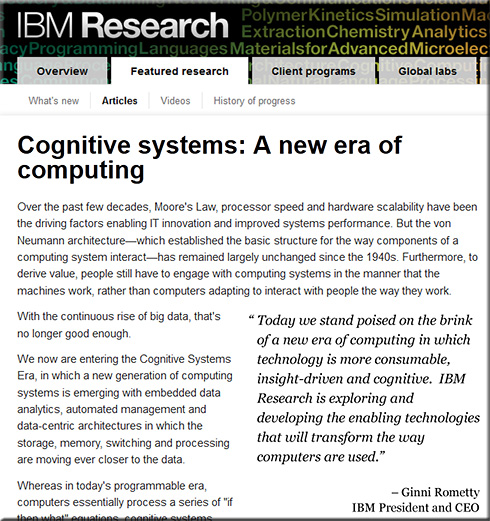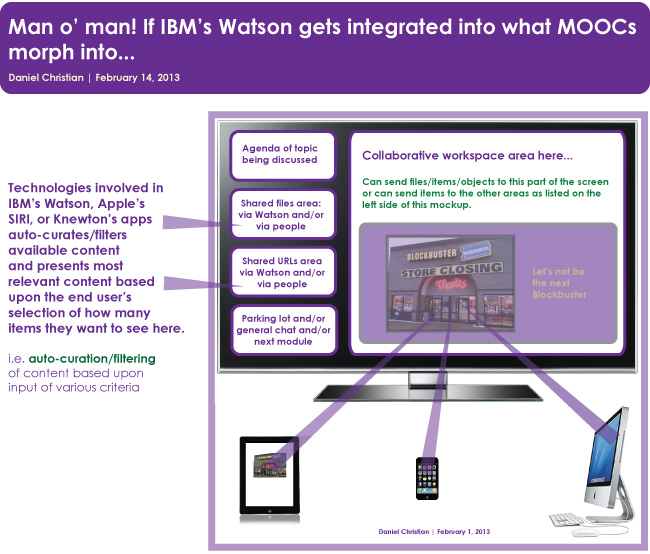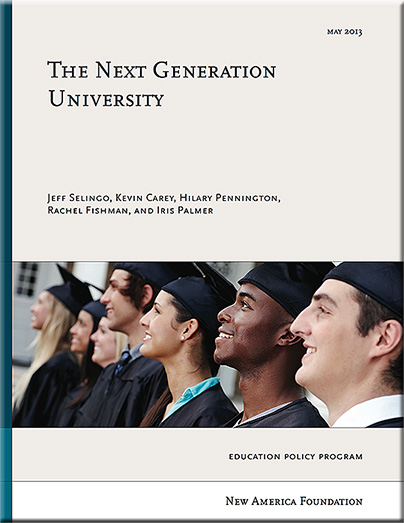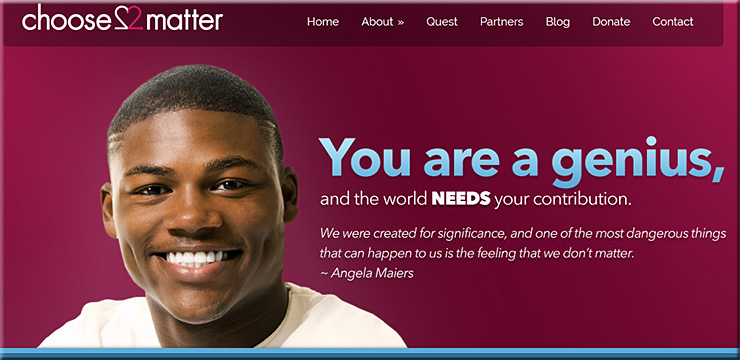How to get a job — by Thomas L. Friedman
Excerpt (emphasis DSC):
Underneath the huge drop in demand that drove unemployment up to 9 percent during the recession, there’s been an important shift in the education-to-work model in America. Anyone who’s been looking for a job knows what I mean. It is best summed up by the mantra from the Harvard education expert Tony Wagner that the world doesn’t care anymore what you know; all it cares “is what you can do with what you know.” And since jobs are evolving so quickly, with so many new tools, a bachelor’s degree is no longer considered an adequate proxy by employers for your ability to do a particular job — and, therefore, be hired. So, more employers are designing their own tests to measure applicants’ skills. And they increasingly don’t care how those skills were acquired: home schooling, an online university, a massive open online course, or Yale. They just want to know one thing: Can you add value?
…
People get rejected for jobs for two main reasons, said Sharef. One, “you’re not showing the employer how you will help them add value,” and, two, “you don’t know what you want, and it comes through because you have not learned the skills that are needed.” The most successful job candidates, she added, are “inventors and solution-finders,” who are relentlessly “entrepreneurial” because they understand that many employers today don’t care about your résumé, degree or how you got your knowledge, but only what you can do and what you can continuously reinvent yourself to do.
.
From DSC:
So how about it? Are the students coming out of K-12 and higher ed prepared for this changing workplace? If not, how can we better prepare them? It seems to me we should require that each student create their own business — and help them build it before they graduate. It doesn’t matter if that business makes any money at all. What matters is the learning/experiences that the students would gain.
Also, to folks in the corporate world, help us get students to the places you need them to be — and stop expecting the”purple unicorns” to show up at your doorstep. Adjust your expectations and aim for a higher purpose than pleasing the shareholder/Wall Street.










